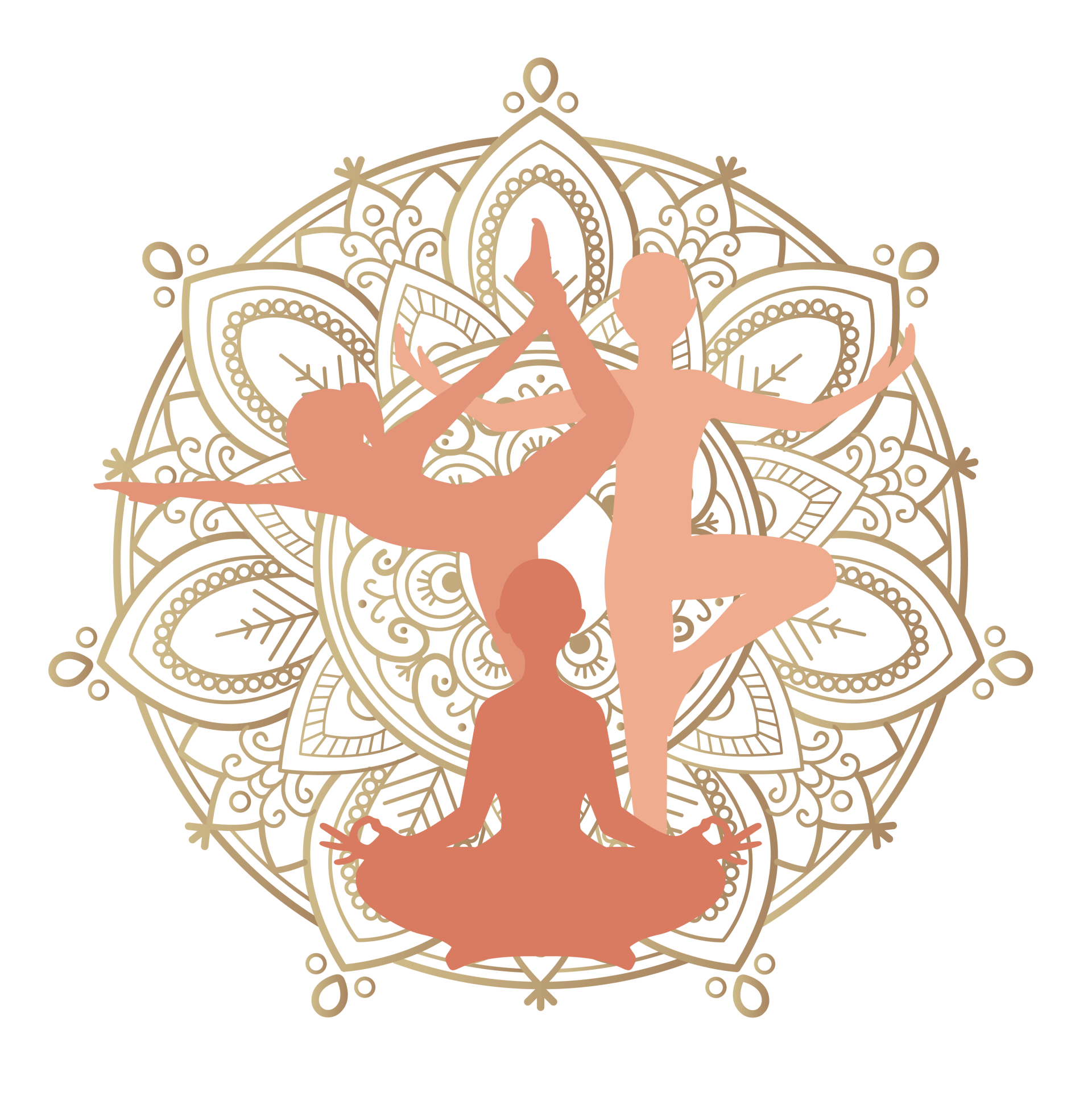🌿🧘♀️ Yoga for Different Groups 🌺🙏
🌿🧘♀️ Yoga for Different Groups 🌺🙏
Hello friends!
Welcome to our blog where we will explore how yoga can be adapted for different groups.
Whether you are a child, a senior, a pregnant woman, an athlete, an office worker, someone with PTSD, recovering from illness, a teacher, a healthcare professional, a couple, someone with a disability, or a student, yoga has something to offer everyone.
Let’s discover together how this ancient practice can be adapted to all ages and stages of life.
Yoga for Children 👶🧘♂️
Yoga for children focuses on fun and engagement, using stories, games, and activities to teach yoga postures and breathing techniques.
⭐️ Benefits:
- Focus and Attention: Yoga helps children improve their ability to concentrate and pay attention.
- Stress Management: It teaches them breathing techniques to manage stress and anxiety.
- Flexibility and Strength: Yoga postures improve flexibility and physical strength.
🤸🏻♂️ Example Postures:
- Tree Pose (Vrksasana): Helps improve balance and concentration.
- Cat Pose (Marjaryasana): Strengthens the spine and improves flexibility.
👉🏼 Practical Tips:
- Use stories and themes to make yoga sessions more engaging.
- Integrate yoga games to make learning fun.
Yoga for Seniors 👵🧘♀️
Yoga for seniors focuses on gentle movements and adapted postures to improve mobility, flexibility, and strength without stressing the joints.
⭐️ Benefits:
- Mobility and Flexibility: Improves joint mobility and overall flexibility.
- Balance and Coordination: Reduces the risk of falls by improving balance and coordination.
- Mental Well-being: Reduces stress and anxiety, enhancing quality of life.
🤸🏻♂️ Example Postures:
- Mountain Pose (Tadasana): Improves balance and posture.
- Warrior II Pose (Virabhadrasana II): Strengthens the legs and improves balance.
👉🏼 Practical Tips:
- Use props like chairs, blocks, and straps to facilitate postures.
- Prefer short and regular sessions to avoid fatigue.
Yoga for Pregnant Women 🤰🧘♀️
Prenatal yoga is designed to support pregnant women by helping them stay fit, manage stress, and prepare their bodies for childbirth.
⭐️ Benefits:
- Muscle Strengthening: Helps strengthen the muscles needed for childbirth.
- Stress Management: Breathing and relaxation techniques help manage stress and anxiety.
- Pain Relief: Reduces lower back pain and pregnancy discomforts.
🤸🏻♂️ Example Postures:
- Butterfly Pose (Baddha Konasana): Opens the hips and improves flexibility.
- Goddess Pose (Utkata Konasana): Strengthens the legs and pelvis.
👉🏼 Practical Tips:
- Avoid postures on the stomach and deep twists.
- Focus on poses that open the hips and strengthen the back.
Yoga for Athletes 🏅🧘♂️
Yoga for athletes focuses on improving flexibility, preventing injuries, and enhancing overall performance.
⭐️ Benefits:
- Flexibility: Improves flexibility, reducing the risk of injuries.
- Strength: Strengthens stabilizing muscles and improves balance.
- Recovery: Aids muscle recovery after training.
🤸🏻♂️ Example Postures:
- Pigeon Pose (Eka Pada Rajakapotasana): Stretches the hips and glutes.
- Downward-Facing Dog (Adho Mukha Svanasana): Stretches the hamstrings and calves.
👉🏼 Practical Tips:
- Integrate yoga into your training routine to improve flexibility and recovery.
- Focus on postures that target the muscles most used in your sport.
Yoga for Office Workers 🧑💻🧘♂️
Yoga for office workers helps counteract the negative effects of sedentary lifestyles, reduce tension, and improve posture.
⭐️ Benefits:
- Reduction of Muscle Pain: Relieves back, shoulder, and neck pain caused by prolonged sitting.
- Improvement of Posture: Strengthens back muscles and improves body alignment.
- Stress Management: Helps reduce stress and increase concentration.
🤸🏻♂️ Example Postures:
- Eagle Pose (Garudasana): Stretches and strengthens the shoulders and upper back.
- Cow Face Pose (Gomukhasana): Stretches the arms, shoulders, and opens the chest.
👉🏼 Practical Tips:
- Take regular breaks to practice some yoga postures at your desk.
- Integrate breathing exercises to manage stress during the workday.
Yoga for People with PTSD 💔🧘♀️
Therapeutic yoga can help manage PTSD symptoms by providing calm and safety.
⭐️ Benefits:
- Anxiety Reduction: Helps calm the mind and reduce anxiety attacks.
- Stress Management: Teaches breathing and meditation techniques to manage emotions.
- Improvement of Self-Confidence: Strengthens self-confidence and resilience.
🤸🏻♂️ Example Postures:
- Child’s Pose (Balasana): Offers a calm and secure refuge.
- Corpse Pose (Shavasana): Promotes deep relaxation and letting go.
👉🏼 Practical Tips:
- Favor postures and breathing techniques that make you feel safe.
- Work with a yoga teacher trained in trauma.
Yoga for People in Recovery 🏥🧘♂️
Gentle yoga can support healing by improving circulation and reducing tension.
⭐️ Benefits:
- Healing Acceleration: Promotes blood circulation and muscle recovery.
- Pain Reduction: Helps relieve pain and tension.
- Mobility Improvement: Increases flexibility and mobility without excessive stress.
🤸🏻♂️ Example Postures:
- Legs-Up-the-Wall Pose (Viparita Karani): Helps circulation and relaxation.
- Supine Spinal Twist (Supta Matsyendrasana): Gently relaxes the spine and muscles.
👉🏼 Practical Tips:
- Consult your doctor before starting yoga during recovery.
- Practice gentle postures and avoid abrupt movements.
Yoga for Teachers and Healthcare Professionals 👩🏫🧘♂️
Yoga helps manage daily stress and maintain energy while caring for others.
⭐️ Benefits:
- Stress Management: Helps reduce stress and increase concentration.
- Energy Increase: Revitalizes the body and mind.
- Mental Health Improvement: Promotes relaxation and emotional well-being.
🤸🏻♂️ Example Postures:
- Warrior Pose (Virabhadrasana): Strengthens and revitalizes the body.
- Half Moon Pose (Ardha Chandrasana): Balances and stretches the body.
👉🏼 Practical Tips:
- Practice yoga before or after work to manage stress.
- Integrate breathing exercises to stay centered throughout the day.
Yoga for Couples 💑🧘♀️🧘♂️
Yoga for couples strengthens connection and intimacy by practicing together.
⭐️ Benefits:
- Connection Strengthening: Improves communication and mutual understanding.
- Communication Improvement: Promotes active listening and mutual support.
- Intimacy Increase: Strengthens trust and complicity.
🤸🏻♂️ Example Postures:
- Double Tree Pose: Balance work and mutual support.
- Partner Backbend: Opens the chest and strengthens trust.
👉🏼 Practical Tips:
- Practice yoga together regularly to strengthen your connection.
- Use yoga as an activity for relaxation and bonding.
Yoga for People with Disabilities ♿🧘♂️
Adaptive yoga allows everyone to practice, regardless of their abilities.
⭐️ Benefits:
- Mobility Improvement: Increases flexibility and strength without stressing the joints.
- Pain Reduction: Relieves chronic pain and muscle tension.
- Self-Confidence Increase: Promotes independence and emotional well-being.
🤸🏻♂️ Example Postures:
- Seated Mountain Pose: Strengthens the core and improves posture.
- Assisted Child’s Pose: Offers deep relaxation with support.
👉🏼 Practical Tips:
- Work with a teacher trained in adaptive yoga.
- Use props to facilitate postures.
Yoga for Students 📚🧘♀️
Yoga helps students manage academic stress and improve concentration.
⭐️ Benefits:
- Stress Reduction: Helps manage study and exam stress.
- Concentration Improvement: Increases attention span and mental clarity.
- Energy Increase: Revitalizes the body and mind.
🤸🏻♂️ Example Postures:
- Half Spinal Twist (Ardha Matsyendrasana): Promotes digestion and concentration.
- Shoulder Stand (Sarvangasana): Improves circulation and energy.
👉🏼 Practical Tips:
- Integrate yoga into your study routine to stay calm and focused.
- Use breathing techniques before exams to reduce stress.
Conclusion
Yoga is an incredibly adaptable practice that offers mental, emotional, and physical health benefits for all ages and stages of life. There is a style of yoga that can meet your specific needs.
Enjoy every breath and movement on your mat.
Namaste 🪷






